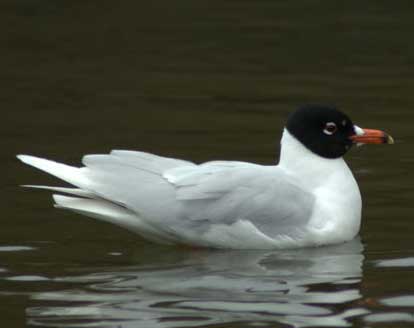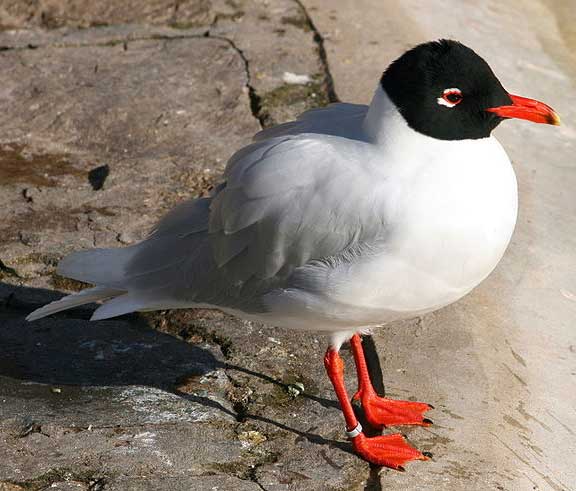
Ichthyaetus melanocephalus (*)
Superregnum: Eukaryota
Regnum: Animalia
Subregnum: Eumetazoa
Cladus: Bilateria
Cladus: Nephrozoa
Superphylum: Deuterostomia
Phylum: Chordata
Subphylum: Vertebrata
Infraphylum: Gnathostomata
Superclassis: Tetrapoda
Cladus: Reptiliomorpha
Cladus: Amniota
Classis: Reptilia
Cladus: Eureptilia
Cladus: Romeriida
Subclassis: Diapsida
Cladus: Sauria
Infraclassis: Archosauromorpha
Cladus: Crurotarsi
Divisio: Archosauria
Subsectio: Ornithodira
Subtaxon: Dinosauromorpha
Cladus: Dinosauria
Ordo: Saurischia
Cladus: Eusaurischia
Cladus: Theropoda
Cladus: Neotheropoda
Cladus: Averostra
Cladus: Tetanurae
Cladus: Avetheropoda
Cladus: Coelurosauria
Cladus: Maniraptoromorpha
Cladus: Maniraptoriformes
Cladus: Maniraptora
Cladus: Pennaraptora
Cladus: Eumaniraptora
Cladus: Avialae
Infraclassis: Aves
Cladus: Euavialae
Cladus: Avebrevicauda
Cladus: Pygostylia
Cladus: Ornithothoraces
Cladus: Euornithes
Cladus: Ornithuromorpha
Cladus: Ornithurae
Cladus: Carinatae
Parvclassis: Neornithes
Cohors: Neognathae
Ordo: Charadriiformes
Subordo: Lari
Familia: Laridae
Subfamilia: Larinae
Genus: Ichthyaetus
Species: Ichthyaetus melanocephalus
Name
Ichthyaetus melanocephalus (Temminck, 1820)
Synonyms
Larus melanocephalus (protonym)

Ichthyaetus melanocephalus (*)
References
Manuel d'ornithologie ed.2, 2: 777.
Vernacular names
العربية: نورس البحر المتوسط
asturianu: Gavilueta Tiesta Prieta
azərbaycanca: Aralıq dənizi qağayısı
беларуская: Чайка чорнагаловая
български: Малка черноглава чайка
brezhoneg: Ar gouelanig penn du
català: Gavina capnegra
čeština: Racek černohlavý
Cymraeg: Gwylan Môr y Canoldir
dansk: Sorthovedet måge
Deutsch: Schwarzkopfmöwe
Ελληνικά: Μαυροκέφαλος Γλάρος
English: Mediterranean Gull
Esperanto: Nigrakapa mevo
español: Gaviota Cabecinegra
eesti: Karbuskajakas
euskara: Antxeta burubeltza
suomi: Mustanmerenlokki
føroyskt: Høvuðsvartur mási
français: Mouette mélanocéphale
Gaeilge: Sléibhín Meánmhuirí
galego: Gaivota cabecinegra
עברית: שחף שחור ראש
hrvatski: Crnoglavi Galeb
magyar: Szerecsensirály
հայերեն: Որոր սևագլուխ
íslenska: Lónamáfur
italiano: Gabbiano corallino
日本語: ニシズグロカモメ
ქართული: შავთავა თოლია
қазақша: Қарабас шағала
Lëtzebuergesch: Schwaarzkappméiw
lietuvių: Juodagalvis kiras
latviešu: Melngalvas kaija
македонски: Медитерански галеб
Malti: Gawwija Rasha Sewda
Nederlands: Zwartkopmeeuw
norsk: Svartehavsmåke
polski: Mewa czarnogłowa
português: Gaivota-de-cabeça-preta
rumantsch: Muetta dal chau nair
română: Pescăruş cu cap negru
русский: Черноголовая чайка
slovenčina: Čajka čiernohlavá
slovenščina: Črnoglavi galeb
shqip: Pulëbardha kokëzezë
српски / srpski: crnoglavi galeb - Црноглави галеб
svenska: Svarthuvad mås
Türkçe: Akdeniz martısı
українська: Мартин середземноморський
中文: 地中海鸥
The Mediterranean gull (Ichthyaetus melanocephalus) is a small gull. The scientific name is from Ancient Greek. The genus Ichthyaetus is from ikhthus, "fish", and aetos, "eagle", and the specific melanocephalus is from melas, "black", and -kephalos "-headed".[2]
This gull breeds almost entirely in the Western Palearctic, mainly in the south east, especially around the Black Sea, and in central Turkey. There are colonies elsewhere in southern Europe, and this species has undergone a dramatic range expansion in recent decades. As is the case with many gulls, it has traditionally been placed in the genus Larus.
Description
The Mediterranean gull is slightly larger and bulkier than the black-headed gull with a heavier bill and longer, darker legs. The breeding plumage adult is a distinctive white gull, with a very pale grey mantle and wings with white primary feathers without black tips. The black hood extends down the nape and shows distinct white eye crescents.[3] The blunt tipped, parallel sided, dark red bill has a black subterminal band. The non breeding adult is similar but the hood is reduced to an extensive dusky "bandit" mask through the eye. This bird takes two years to reach maturity. First year birds have a black terminal tail band and more black areas in the upperwings, but have pale underwings.
Distribution
Formerly restricted to the Black Sea and the eastern Mediterranean this species has now expanded over most of Europe as far as Great Britain and Ireland, with 37 sites: 543–592 pairs in the United Kingdom in 2008.[4] In Ireland breeding has been recorded in at least four counties. Breeding has also occurred in Belgium, the Netherlands, Denmark, Sweden, Estonia, Switzerland, the Czech Republic, Hungary and the Balkans.
In winter, this bird migrates to Mediterranean and Atlantic coasts.
Ecology
Eggs, Collection Museum Wiesbaden
This gull breeds in colonies in large reed beds or marshes, or on islands in lakes; where its population is small, it nests in black-headed gull colonies. Like most gulls, it is highly gregarious in winter, both when feeding or in evening roosts. It is not a pelagic species, and is rarely seen at sea far from coasts.
The Mediterranean gull's feeding habits are much an opportunistic omnivore, eating fish, worms, scraps, insects, offal and carrion.
This is a noisy species, especially at colonies, with a nasal "yeah" call.
Conservation
The Mediterranean gull is one of the species to which the Agreement on the Conservation of African-Eurasian Migratory Waterbirds (AEWA) applies.
Southend Pier, UK
References
Butchart, S.; Symes, A. (2015). "Larus melanocephalus". IUCN Red List of Threatened Species. 2015: e.T22694443A85050054.
Jobling, James A (2010). The Helm Dictionary of Scientific Bird Names. London: Christopher Helm. pp. 224, 246. ISBN 978-1-4081-2501-4.
Peterson, R.; Mountfort, G.; Hollom, P.A.S. (1967). A Field Guide to the Birds of Britain and Europe. Collins.
Holling, Mark (September 2010). "Rare breeding birds in the United Kingdom in 2008" (PDF). British Birds. Rare Breeding Birds Panel. 103: 482–538.
Retrieved from "http://en.wikipedia.org/"
All text is available under the terms of the GNU Free Documentation License

